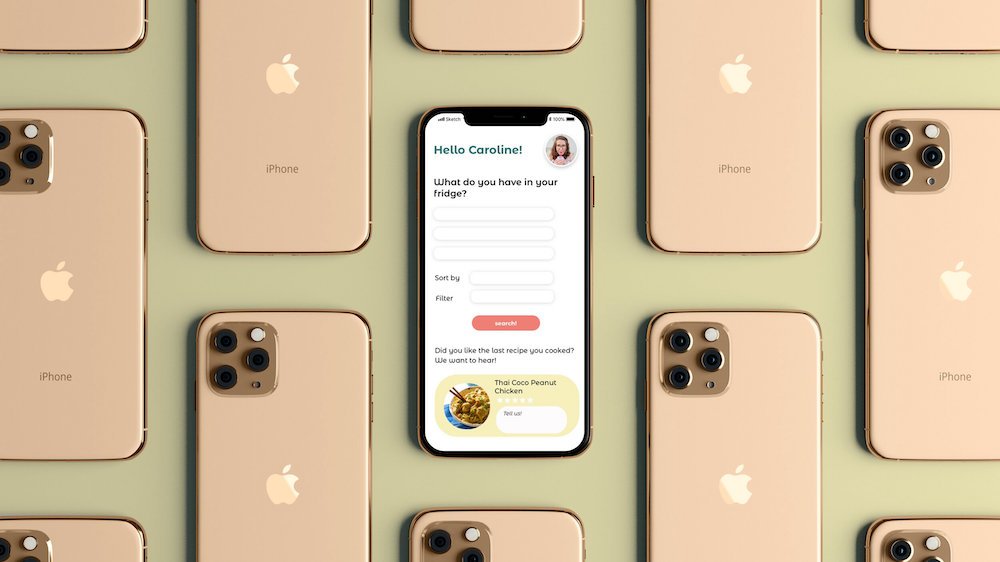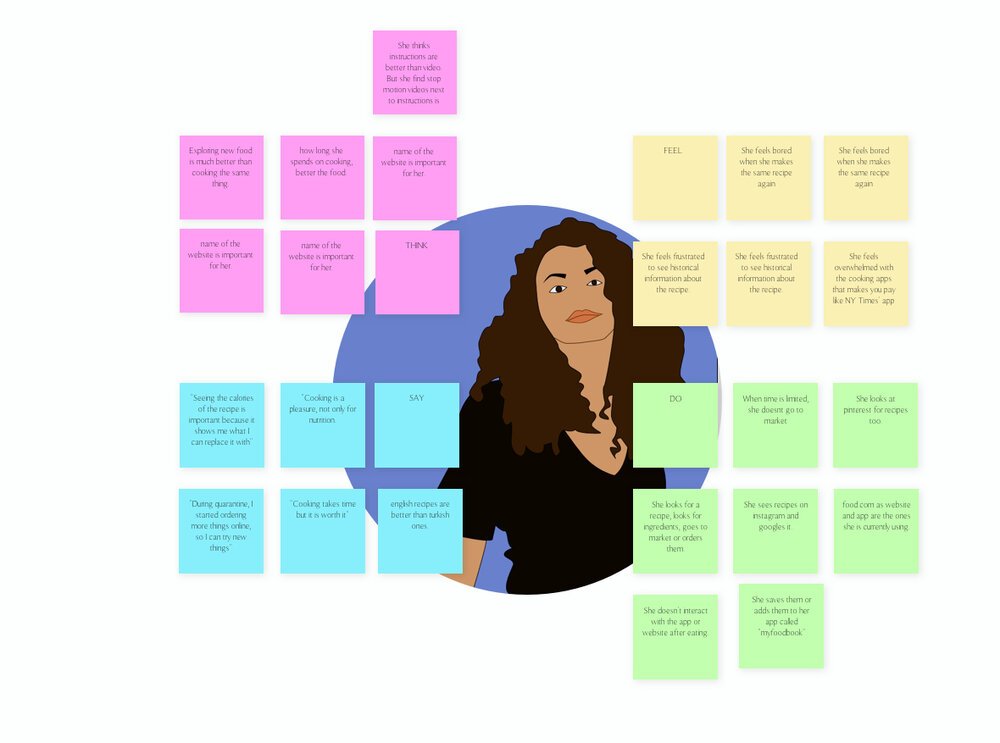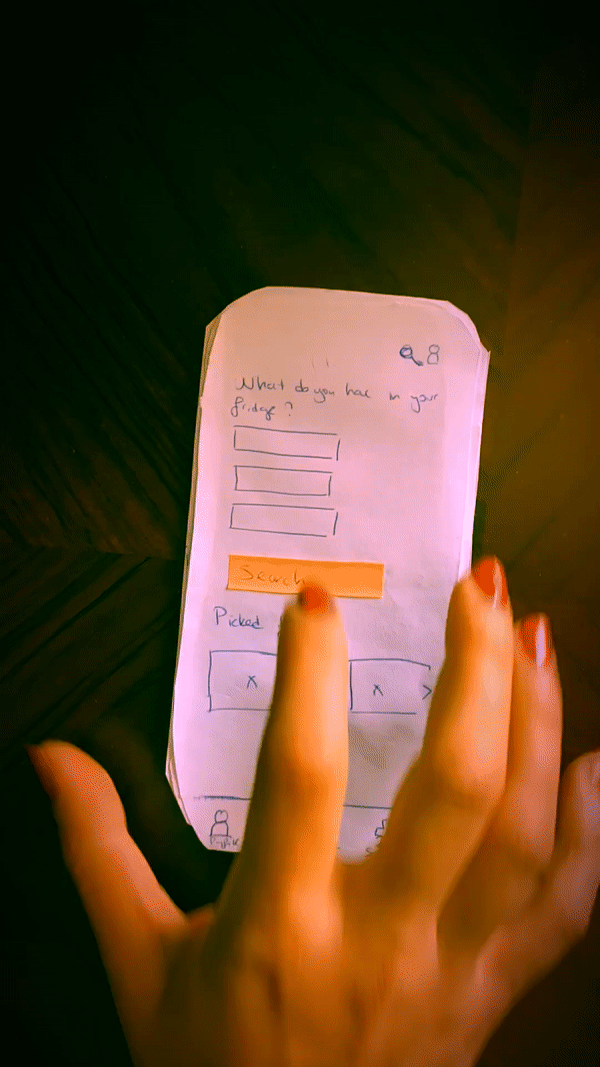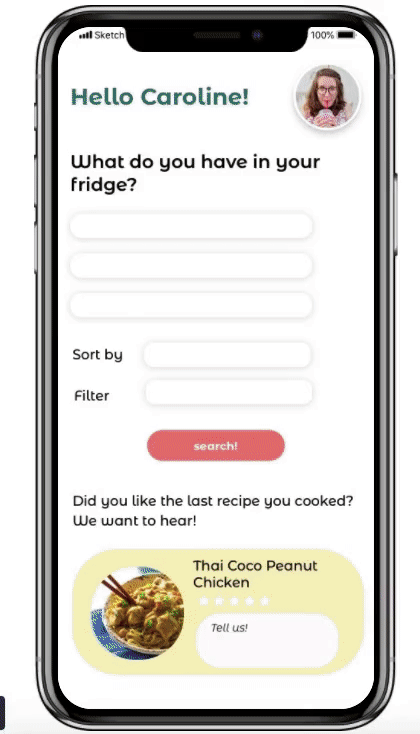My Fridge- A UX Design Project
"My Fridge" is a mobile application addressing the issue of food waste by empowering users to create meals with ingredients they already have. Through user research and persona development, the app caters to the needs of individuals like Zeynep and Maria, offering personalized recipe suggestions and promoting sustainable cooking practices. With a focus on user-centric design and measurable success metrics, the project aims to foster engagement, satisfaction, and positive environmental impact.
Project Description
During the pandemic, significant shifts in social behavior were observed, with individuals increasingly opting to produce items traditionally purchased from markets, such as bread, and minimizing visits to stores by buying in bulk. This change inadvertently led to a surplus of food items in households, resulting in higher rates of food spoilage. Research revealed staggering levels of food waste globally, prompting the development of My Fridge, a mobile application aimed at helping users discover recipes based on ingredients already available in their kitchens. The goal was to create a user-friendly app that would promote sustainable cooking practices while making meal preparation more accessible and enjoyable.
Process
Identifying the Need: Recognized a growing issue of food waste during the pandemic and the need for a solution to help users utilize existing ingredients effectively.
User Research: Conducted interviews to gather insights into user preferences, cooking habits, and pain points, which informed the creation of user personas.
Persona Development: Created two personas, Zeynep and Maria, representing different user demographics and their distinct needs and goals.
Prioritization Matrix: Utilized a prioritization matrix to categorize app features based on user needs and business objectives, ensuring focus on essential functionalities.
User Journey Mapping: Mapped out the user journey from awareness to loyalty, outlining key touchpoints and interactions with the app.
Success Metrics: Established success metrics to measure the app’s effectiveness, including user engagement, satisfaction, and impact on food waste reduction.
Prototyping: Designed paper wireframes followed by digital prototypes to visualize the app’s layout and functionality, incorporating feedback and iterations.
Collaboration: Worked collaboratively with a mentor from Ladies of UX Amsterdam to refine the design and ensure alignment with industry standards and best practices.
Conclusion: The project concluded with the successful development of a user-friendly UX/UI design aimed at promoting sustainable cooking practices and reducing food waste.
Interviews and Persona Building
Through interviews, key insights were gathered, including preferences for variety in recipes, concerns about calorie intake, strategic meal planning, dietary preferences (such as vegan or vegetarian), reliance on online recipe searches, consideration of preparation time, and the importance of recipe ratings. You can see the Empathy maps here.
Based on these insights, two personas were created:
Zeynep: A 27-year-old working student with a busy schedule, seeking inspiration for meals amidst her hectic lifestyle.
Maria: A 65-year-old retiree passionate about cooking, focused on minimizing food waste and utilizing existing ingredients effectively.
Prioritization Matrice
A prioritization matrix was employed to categorize app features into must-have, should-have, nice-to-have, and won’t-have, ensuring alignment with user needs and business goals.
Success Metrics
To gauge the app’s success, several metrics were identified:
1-Number of Active Users: To measure the success of the app by tracking the number of users who regularly use the app to find and make recipes.
2-Customer Satisfaction: Feedback can be collectrf from users on their experience with the app, including ease of use and overall satisfaction.
3-Time Spent on App: Tracking the average time users spend in the app to gauge their engagement with the app's features and content.
4-User Retention: It can be tracked how often users returned to the app to find more recipes, indicating the app was providing value and meeting their needs.
Paper Prototype
I developed paper wireframes to test the app’s layout and functionality. These wireframes served as the basis for creating digital prototypes.
Prototype
The project, a collaboration with a mentor from Ladies of UX Amsterdam, culminated in a successful UX/UI design initiative. While no quantitative data was collected during the project, the focus remained on promoting sustainable cooking practices and enhancing user experience







